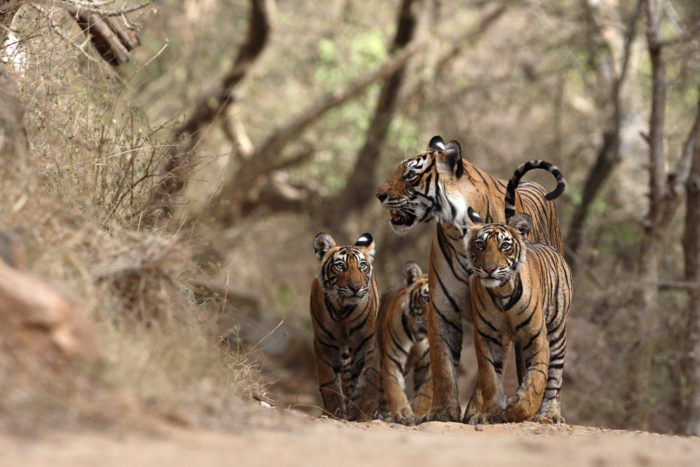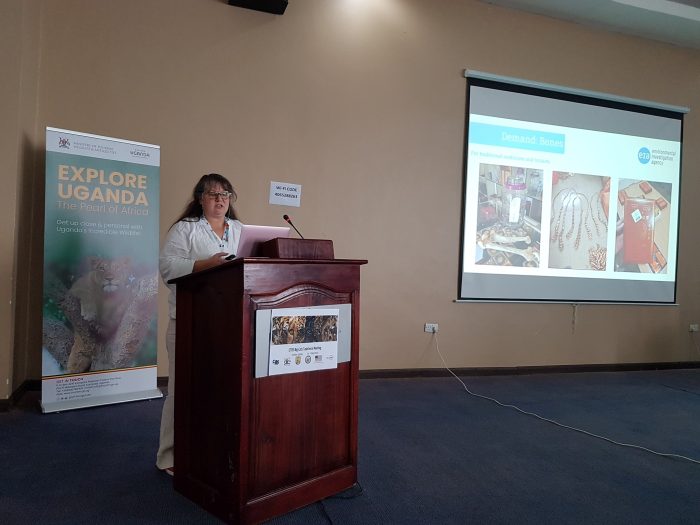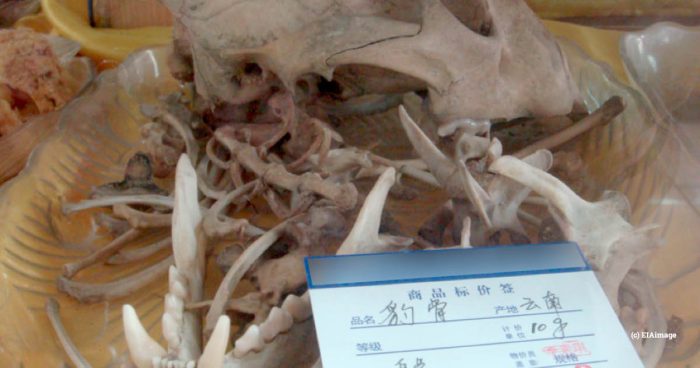On International Tiger Day, we’re letting Catbyte out of the bag to help protect the world’s big cats!



Today is International Tiger Day – a reminder of why the conservation of tigers and other big cats is critical to addressing the biodiversity and climate crisis – and we bring you news of a new project we are working on with Go Insight.
Across the habitats that they occupy, tigers and other big cats are keystone, indicator and umbrella species – they play crucial roles in the ecosystems they inhabit, their populations indicate the health of those ecosystems and they act as focal points for conservation funds and action, the benefits of which also flow to the other species sharing the same spaces.
The habitats they occupy secure water for millions of people and mitigate climate change. Given the vast and varied landscapes that they occupy across Asia, Africa and North and South America, the health of wild big cat populations is an excellent measure by which to assess global efforts to reverse biodiversity loss and implement the Sustainable Development Goals.

Tigers play crucial roles in the ecosystems the inhabit
In the broadest interpretation of the term, big cats include eight species – tigers, lions, leopards, snow leopards, clouded leopards, jaguars, cheetahs and pumas. Their International Union for Conservation of Nature (IUCN) conservation status varies from ‘Least Concern’ for pumas to ‘Critically Endangered’ for some sub-species of tigers and leopards.
Big cats face common threats across their ranges in the form of habitat loss and degradation, human-wildlife conflict and poaching for trade in their parts and derivatives. There are differences and particularities influencing how these threats affect each species. When it comes to the threat from trade, a common thread that appears to be emerging is the convergence of parts of different big cat species to feed demand in East and South-East Asia.
Lions and pumas are listed on Appendix II of the Convention on International Trade in Endangered Species of Wild Fauna and Flora (CITES) and international commercial trade of their parts and derivatives continues to be allowed to varying degrees.
Concern for the effect of trade on lions led to the commissioning of a report on the subject for the 70th meeting of the CITES Standing Committee in 2018. The TRAFFIC study highlighted significant quantities of lion bones legally exported from Africa to Asia (Laos, Vietnam, China and Thailand) and also noted significant seizures both in Africa and Asia, indicating that the demand for lion bones was also being supplied by illegal trade.
As with EIA’s 2017 report The Lion’s Share, the study noted that lion bones were being used as a substitute or a supplement for tiger bones in products such as bone-wine and bone-glue.
Separately, a 2021 CITES-commissioned study on the illegal trade in jaguars highlighted the illegal domestic use of jaguar parts and derivatives in range states as well as illegal exports to the USA and Europe. The study also noted illegal exports of jaguar claws to China and the production of jaguar paste, similar to the tiger bone ‘glue’ or ‘cake’ favoured among Vietnamese consumers. The jaguar paste was reportedly for consumption among the local Chinese community as well as for export to China, but the CITES study cautioned that limited information was available in this respect.
Leopards, on the other hand, have long been used as a substitute for tigers in traditional Chinese medicine. Leopards were named as an alternative for tigers after the use of tiger bone was prohibited by China in 1993 and tigers were removed from the official pharmacopeia. Leopards are the most frequently seized big cat in illegal trade.
The trends in the lion trade highlighted in the TRAFFIC study, and the gaps in information noted in it, led to recommendations by the African Carnivores Initiative, the CITES Standing Committee and subsequently a decision by the Conference of the Parties to CITES to commission a new report on all big cat trade, which would be subject to discussion by a new CITES Big Cats Task Force.

Debbie Banks, Tigers & Wildlife Crime Campaign Leader, presents at the CITES Big Cats Task Force Meeting in Entebbe, Uganda (c) P. Rihova
The new report reviewed the trade in eight big cat species, including the routes, parts and derivatives in trade, demand drivers and sourcing of tiger and other big cat parts from captive facilities. EIA was interviewed for the report, which also drew on many of our previous investigation findings, and we participated in the Task Force meeting in Entebbe, Uganda, in April 2023. Several recommendations to address illegal trade in big cats were adopted at the meeting. These include calling for countries to analyse illegal trade data for big cats to ensure timely responses to threats and address information gaps relating to the use, illegal trade and substitution of big cats with the aim of identifying and engaging appropriate partners in the fight against big cat trafficking.
During the course of the Task Force’s meeting, it became apparent that there was a gap in big cat crime trends analysis, including convergence of big cat species in trade, reinforcing the need for a dedicated data centre for big cats. Go Insight, a specialists in data management and analysis, had already initiated such a platform, with a view to informing discussions and actions by countries to address big cat trafficking.
Following the Task Force meeting, EIA and Go Insight discussed the value of integrating information from a decade’s worth of EIA’s online and field research on trade and crime relating to Asian big cats, to supplement analytical outputs from Go Insight’s data centre.
Beyond the seizure data which EIA collates, this includes information on topics such as trade routes, the sourcing of Asian big cats, their parts and products, methods of transportation, convergence in the trade chain of different big cat species and other wildlife, convergence with other crime types, retail and online trade, money flow and prices and trader perceptions of consumer demographics and preferences, regulatory and enforcement interventions and of corruption.
Thanks to seed funding from the Robert H.N. Ho Family Foundation, the Go Insight data centre and dashboard have been further developed and, on this International Tiger Day, we are very excited to announce the launch of the Catbyte website by Go Insight.

Leopard bone found on sale in China (c) EIA
EIA will be contributing data to CatByte which will be assessed together with information from other organisations to enable observation of key areas of focus, i.e., sourcing and trafficking of the species involved and criminal profiling. This will help to generate better insights and analysis of trends in big cat trafficking by bringing together different components of the problem in a holistic manner.
Analysis of this data could be used, for example, to better illuminate the relationship between poaching, legal trade, demand and trafficking. As another example, identification of precursors in relation to the convergence between the lion and tiger trade may be of relevance for other big cats where convergence is a potential concern.
This dedicated resource will be used to generate timely intelligence briefs and rapid assessments which could be disseminated to a network of stakeholders to inform what interventions are needed and when.
CatByte will be an independent resource, managed and maintained by Go Insight, housing data relevant to illegal trade in seven big cat species, i.e., tigers, lions, leopards, snow leopards, clouded leopards, jaguars and cheetahs.
CatByte will be a password-protected platform aiming to bring together data contributors and beneficiaries in the form of government authorities, inter-governmental organisations and non-governmental organisations working on big cat conservation.
The objective of CatByte is to be data driven and intelligence-led, to fully embrace a collaborative, coordinated approach to disrupt crime and to prevent further damage to the conservation status of big cats across the world.